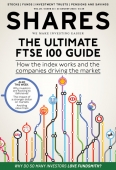Archived article
Please note that tax, investment, pension and ISA rules can change and the information and any views contained in this article may now be inaccurate.
Yu Group is shaking up the energy supply market and investors could be richly rewarded

Yu Group (YU.:AIM) is one of a new breed of independent specialist energy suppliers to businesses. In an industry still dominated by the so-called big six providers this is a company carving a growth niche based on competitive pricing and better quality service.
Readers should be aware that UK consumers can switch energy providers at the relative drop of a hat. That doesn’t apply to businesses which are still tied to typical three year supply agreements.
What Yu Group does well is monitor renewals as they come up and its sales staff swoop in for talks ahead of time. There is a massive market opportunity with thousands of organisations both large and small to chase.
An estimated 40% of small and medium-sized enterprises (SMEs) have stuck it out with their current supplier for more than five years, according to a report from Ofgem last year.
The same study suggests that 90% of SMEs are supplied by one of the big six utilities, and so may well be open to change, especially to a provider more attuned to their specific needs.
Yu Group also has an Ofwat licence to supply water services.
The AIM-quoted company has only been operating at full speed for about two years yet it has proven itself to be an outstanding growth opportunity on almost every metric.
Last year (to 31 December 2017) saw revenue jump three-fold from £16.3m to £47m, versus an original target of £30m pitched at the start of the year. Yu already has £45m of committed revenue for 2019.
Customer numbers soared 70% to 7,361 from which it earned its first ever reported pre-tax profit of £2.24m, and that’s including £840,000 of exceptional losses on derivative contracts.
The company also throws off plenty of cash: £2m of free cash flow in the first six months of 2018 boosting its net cash position to £18.2m. An increasing chunk of this surplus is now going into shareholder pockets via fast-growing dividends.
So while the shares look expensive on a current year basis, trading on a 2018 price to earnings (PE) multiple of 35, that rating drops away rapidly as you look out to 2019 and beyond.
For example, last year’s 17p of adjusted earnings per share (which excludes one-off costs) is expected to more than double to 36.5p in 2019, and hit 48.6p in 2020. All else being equal that would see the forward PE fall to 18.5 by the end of next year.
And earnings estimates have been upgraded several times over the past two years which makes outperformance to current estimates well within the realms of plausibility. (SF)
Important information:
These articles are provided by Shares magazine which is published by AJ Bell Media, a part of AJ Bell. Shares is not written by AJ Bell.
Shares is provided for your general information and use and is not a personal recommendation to invest. It is not intended to be relied upon by you in making or not making any investment decisions. The investments referred to in these articles will not be suitable for all investors. If in doubt please seek appropriate independent financial advice.
Investors acting on the information in these articles do so at their own risk and AJ Bell Media and its staff do not accept liability for losses suffered by investors as a result of their investment decisions.
Issue contents
Big News
- Hill & Smith directors take advantage of profit warning-led share weakness to snap up stock
- Investors shift focus to defensive stocks
- Pressure on corporate brokers implies potential wave of M&A
- Trump attacks the US Federal Reserve
- London hoteliers set to report bumper numbers following July heatwave

 magazine
magazine









